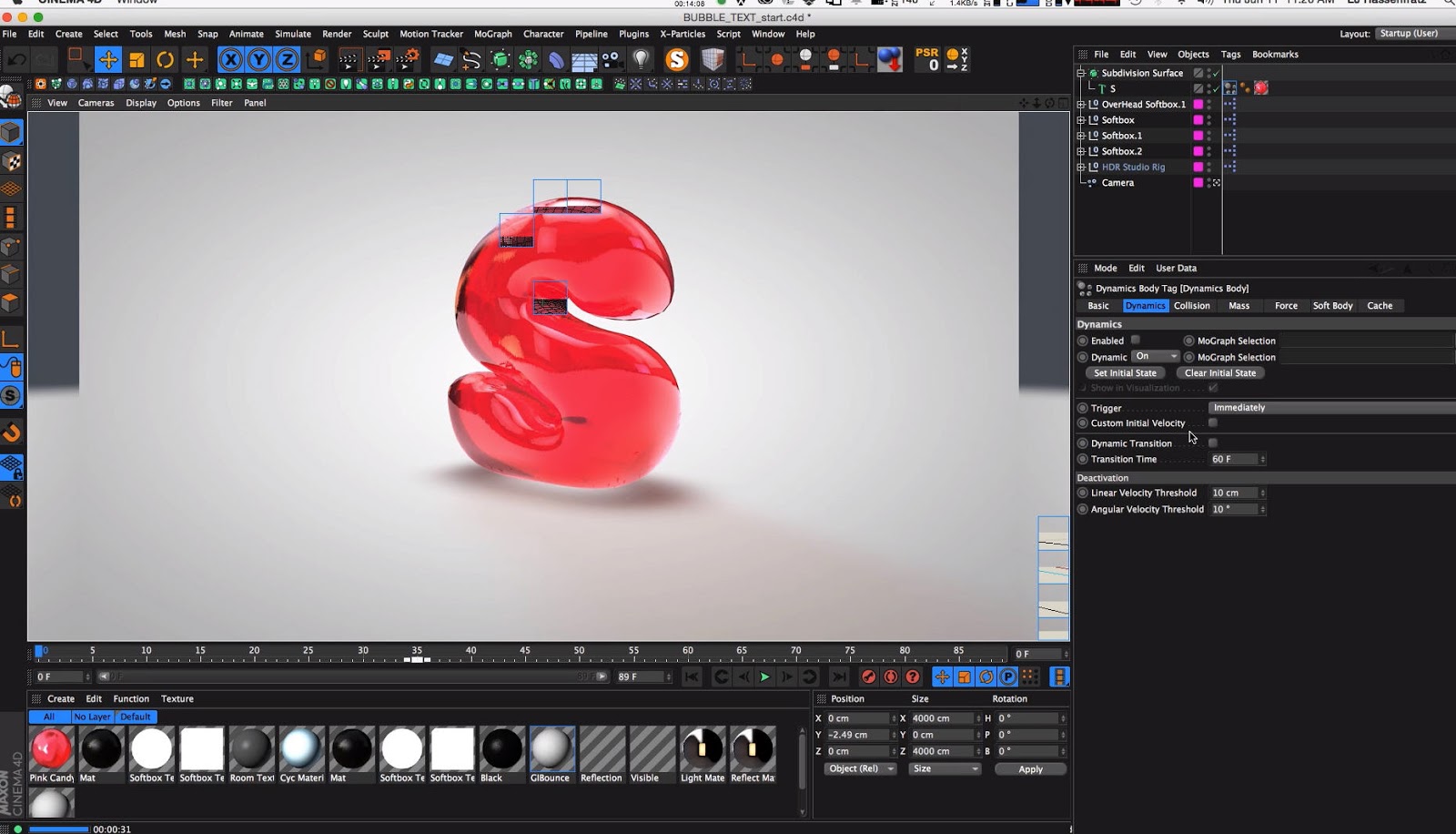


What happens when you've got dozens of images that need to be updated to this new PBR based workflow? Well, just select all of them and choose CV-ConvertToPBR Material and it all works out quite well. Now, that's all well and good when you're converting one or two materials. So this is a pretty huge difference in terms of the quality of our editor preview, as well as the look of our final render here. But if I turn on Default Reflection, I can throw a lacquer coat on top of them and lower this down and really shine them up. And my sticks here, you'll notice don't actually have a Reflection layer that's active, and that's because they didn't have any Specular. Now, my dish here is looking a little bit soft, so what I can do is go to my Default Reflection layer and just adjust the Roughness value down to make it look a little bit harder in appearance, same for my sushi. I could certainly try and build this all up manually or I can select these and just choose CV-convertToPBR Material and now I have something that looks much better. In this case, Cinema 4D struggled to convert the values that were saved in the file, in part because the other application probably set them up differently.

Now, here is a slightly more challenging case from an import. So if I was just to swap in a different HDRI, we'd see that as well. And in my view port, I'm getting a real-time preview of what my reflection of my environment might look like. When I choose just the CV-ConvertToPBR Material, you'll see that we now have a Default Reflection layer, whose roughness I can adjust. When it comes in, you're going to see, in your Color channel, your Texture, and in your Reflectance channel, just this Default Specular, and your preview's not going to look very good. Well, why would I want to do this? Let's say you've imported a model from another application. However, if I select two materials with the same reflectance style set up, I can go in here and adjust their properties together. And the advantage of doing this is that, if I were to multi-select two materials with different reflectance set ups, you'd see that I can't multi-edit them. Now, why these names? Well, they're the exact same ones that you see when you create a new PBR base material. My Specular channel is replaced with a Default Reflection and that's overlaid on top. When I hit CV-ConvertToPBR Material, what it does is take the color value from my Color channel and inject it into a new layer called Default Diffuse. You'll notice that in the Color channel, I've got a color that has been preset and in the Reflectance channel, I have the Default Specular layer. Now, I'm going to hit Undo and step through this a little bit more slowly. Once you've done this, you'll notice that your materials have changed in appearance. You may find it inside of a subdirectory.

To use it, just select the materials you want to convert, go to Script, User Scripts, and locate the CV-ConvertToPBR script. CV-ConvertToPBR Material is a script that makes it easy to take simple color based materials and convert them to a reflectance based workflow.


 0 kommentar(er)
0 kommentar(er)
